Selective Cutting
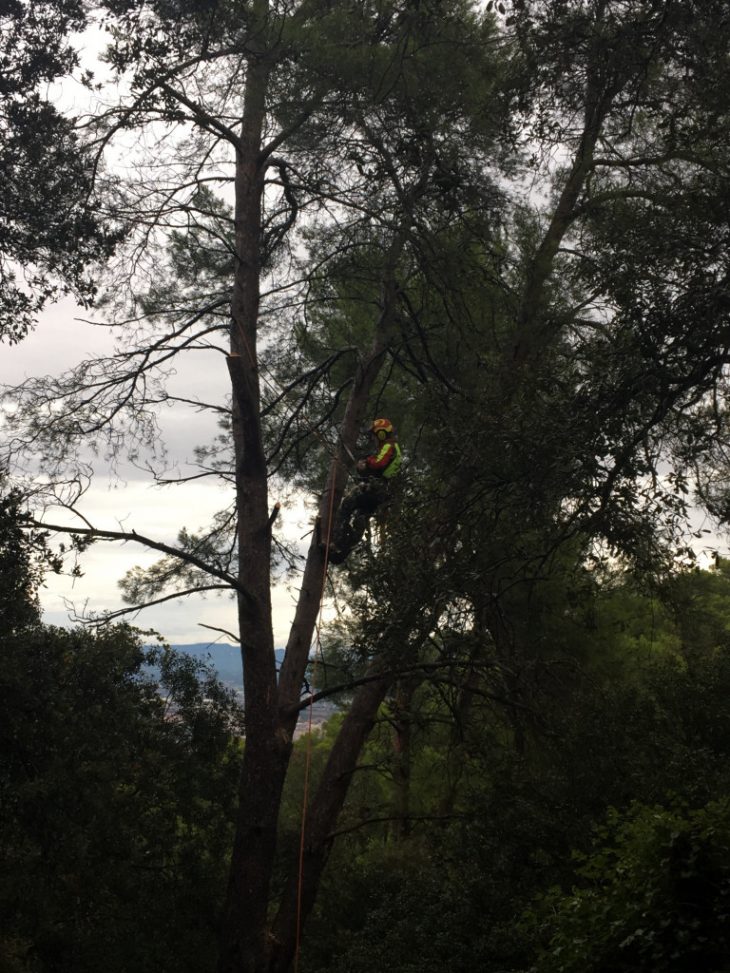
Before felling the tree, it is important to remove any excess limbs that might damage neighboring trees when the tree falls. The lumberjack must first climb the tree, then use a specialty mini-saw to remove pernicious parts of the tree that are not needed for construction. For the purposes of our project, we tried to preserve as many limbs and branches as we could, since we are using the trunk for a sculptural piece and not lumber, but we still need to remove limbs in order to protect the other trees.
Creating A Wooden Hinge
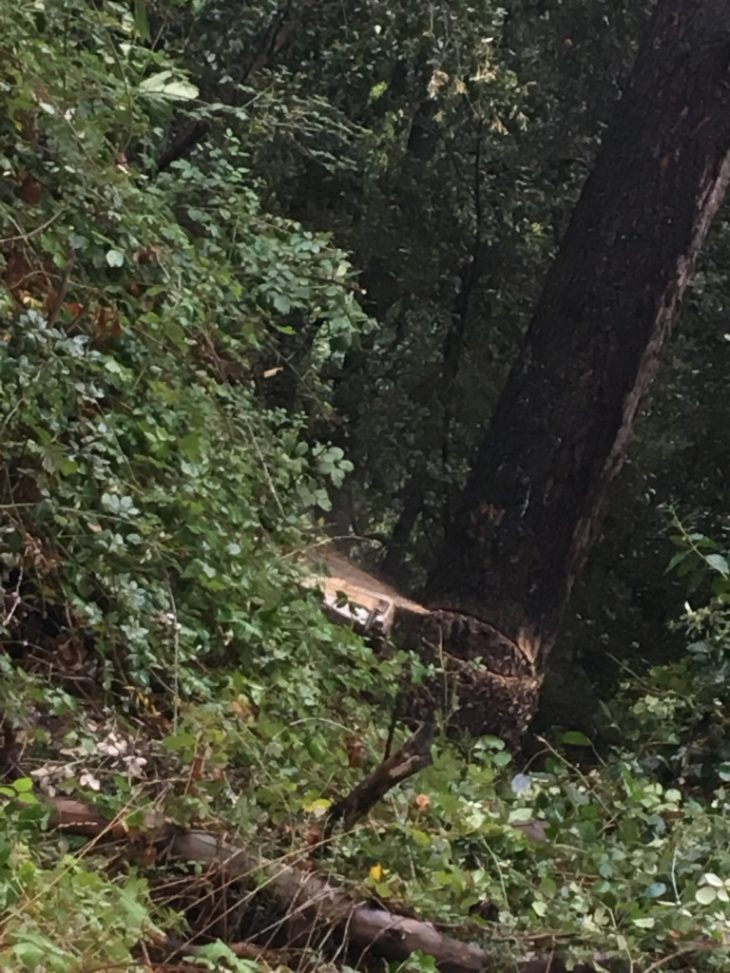
When cutting a tree, one of the most important concerns is where the tree will fall. To ensure a controlled fall, the lumberjacks first cut a wedge into the tree in the direction they would like the tree to fall. In the image above, we can see the chainsaw finishing off the 45 degree cut that will create a hinge for the controlled fall. After this slice is removed, the final cut is made directly opposite the first one.
Tree Transportation
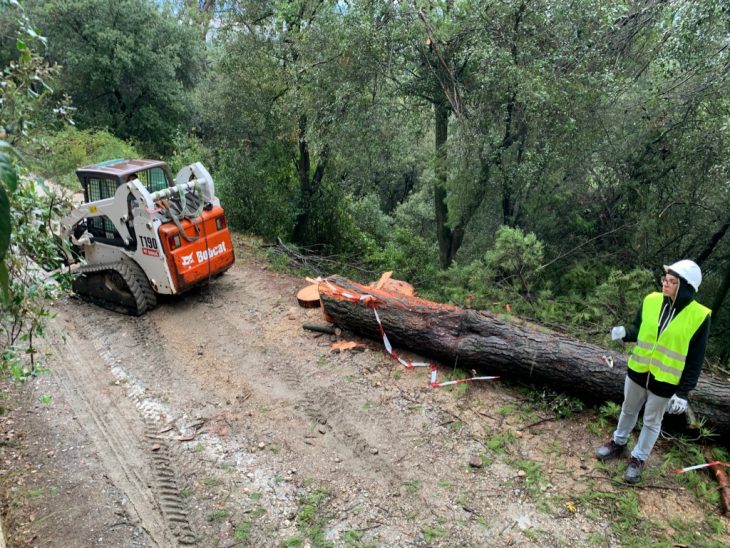
After the tree has been felled, the next phase is transportation. In our case, all the trees we cut down were very close to the main road so getting the trees from the forest to the work site was fairly easy. First, we brought the Bobcat tractor up the road, and wrapped a chain around the base of the tree. It was fairly tricky since the trunk was massive, but with a little effort we got the tree secured to the Bobcat. After that, we slowly dragged the tree down the road with students trailing behind to adjust its course and ensure it stayed on the road.
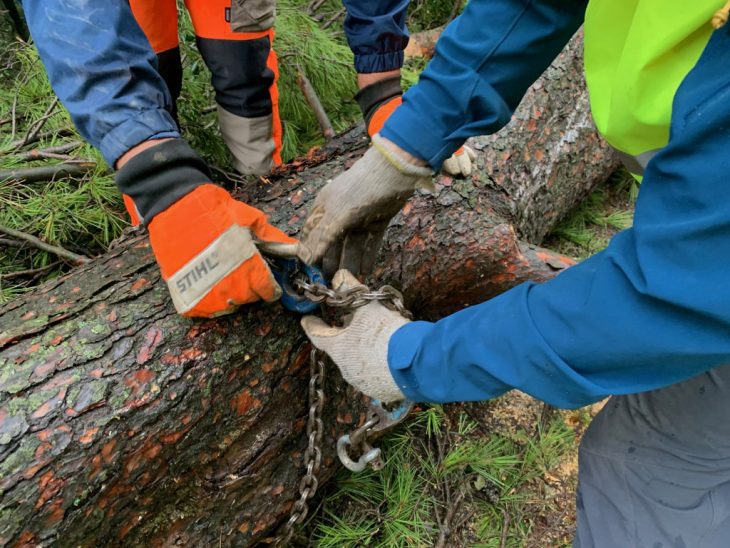
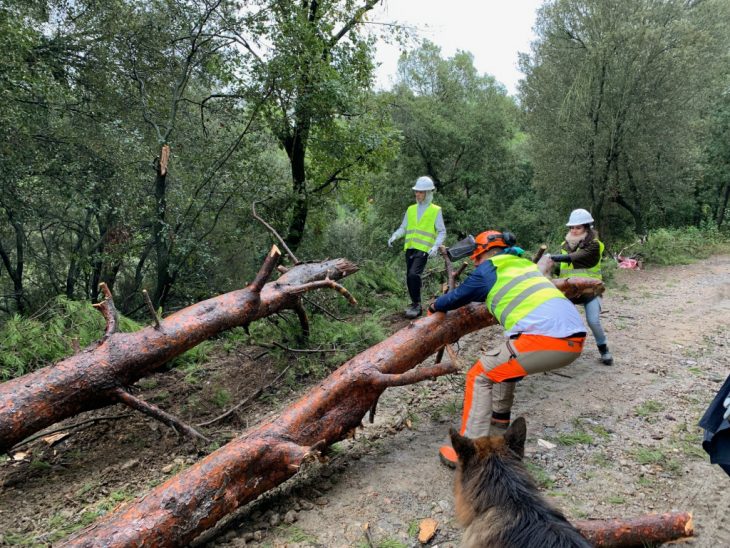

Accidents Happen
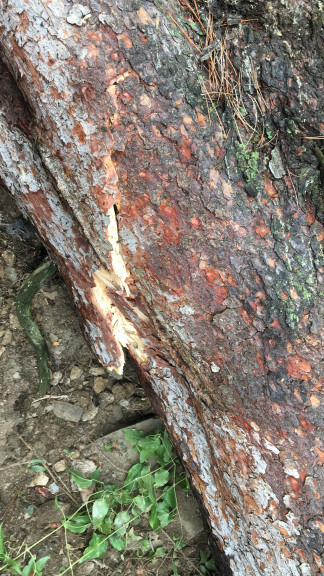
Despite our best efforts, we were not able to preserve all of the desired limbs for one of the trees we cut. As the tree was falling, one of the limbs cracked under the pressure of the rest of the trunk. This could have been prevented if we had more time to string more cables, slowing the decent of the tree and allowing the pressure on the limbs to be more evenly distributed.